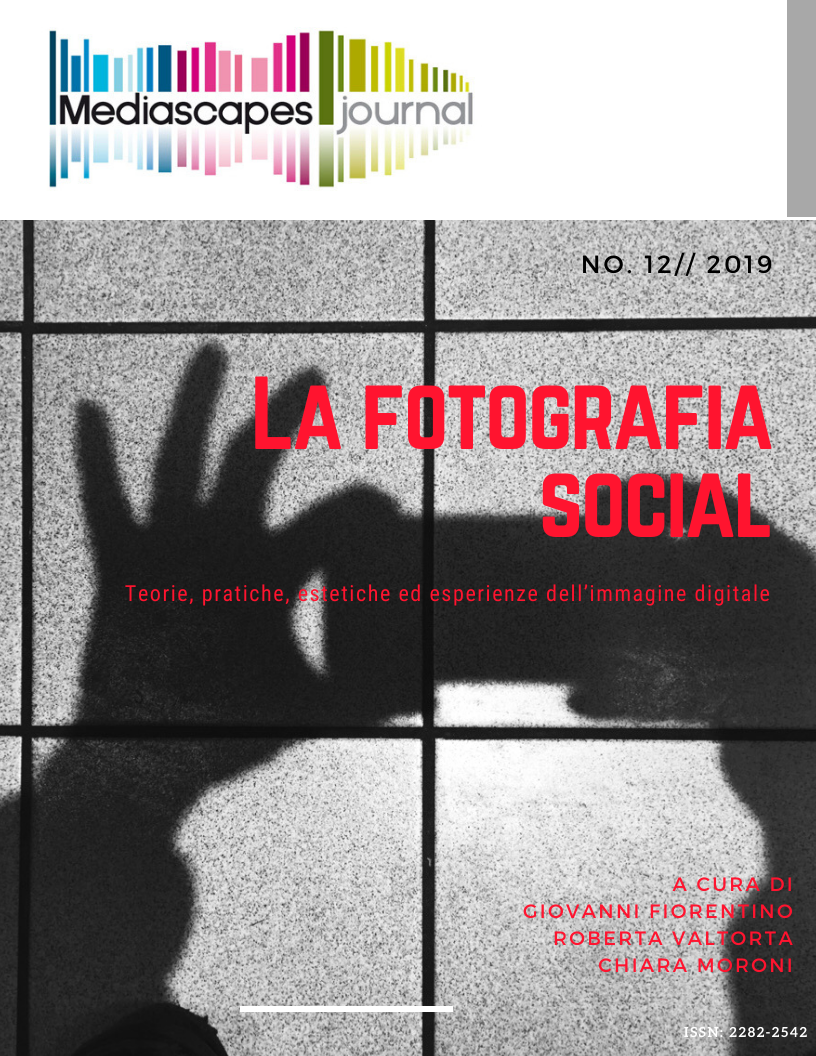La fotografia digitale e la rimediazione dell’esperienza filmica tra i post-millennials
Keywords:
Social Photography, Post-Millennials, Filmic ExperienceAbstract
According to Hayles (2012), digital media favor processes of co-evolution between humans and technologies, which can be summarized in the concept of technogenesis. This anthropological reconfiguration can be observed with greater clarity by studying the relationship between the young generations and the screens. The iGen (Twenge 2017) represents a privileged object of research to observe the transformation of cultural practices and processes of identity and relational construction into contemporary mediascape. Today digital photography occupies a privileged position among the most used media among young and very young people (Richtin, 2009; Bajac, 2010; Fiorentino, 2014), due to its incorporation in mobile and interconnected devices, which allow to take pictures in every situation and in every place and to circulate these images, for more or less extensive audiences, through social media. The survey we have set up aims to detect the ways in which the iGen'ers resort to the second screen, using photography to remedy (Bolter & Grusin, 1999) the filmic experience, meaning the complex of the media experience that begins before watching the film (with information search or viewing of trailers, for example) and ends later (with the formulation of judgments and comments, the discussion with other people, etc.). The research questions we have formulated can be summarized as follows: 1) for what purposes do Post-Millennials use digital photography, communicating with their personalized audiences through social networks during the filmic experience? 2) How do the uses of digital photography change during the filmic experience, depending on the context (cinema or home), the technical properties of the devices (smartphone, tablet) and the company (family, friends, etc.)? 3) Which is the privileged use of the images taken during the filmic experience and to which processes of identity and relational construction are functional? To measure these dimensions, we adopted the qualitative method of the focus group, chosen to dialogue with two groups of high school students, aged 14 to 18, based on a structured interview aimed at detecting the salient dimensions of the phenomenon, as emerged from the research questions. We will present some of the most relevant results of this work.
Downloads
Published
How to Cite
Issue
Section
License
Mediascapes Journal is published under a Creative Commons Attribution Licence 4.0.
With the licence CC-BY, authors retain the copyright, allowing anyone to download, reuse, re-print, modify, distribute and/or copy their contribution. The work must be properly attributed to its author. It should be also mentioned that the work has been first published by the journal Anuac.
Having published these contributions for the first time, Mediascapes Journal will have the right to publish them integrally or partially as reprints or possibly as part of a thematic issue, in both digital and printed format.
It is not necessary to ask further permissions both to author or the journal.


